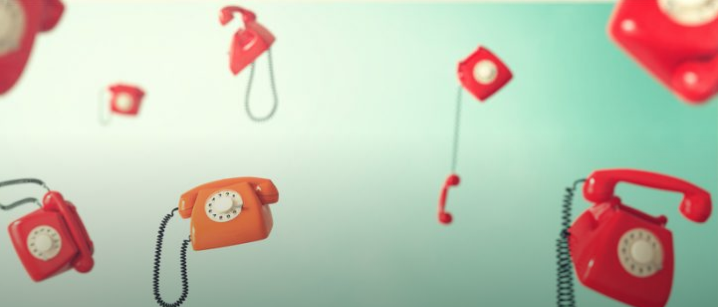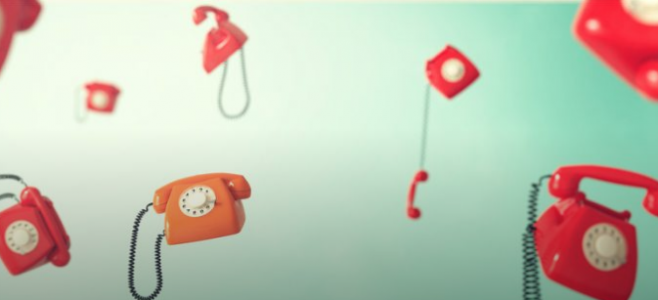Full Article found on streetfightmag.com
Just over half of Americans now use their personal mobile phone numbers as their only phone numbers. A majority of Americans also no longer have landline phones in their homes, and that’s convenient because anyone, anywhere in the world, can now reach you with just that one number. But the opposite is true in the business world, where brands can leverage new technologies to create multiple vanity numbers in order to engage their customers across local, regional, and national marketing campaigns.
That statistic I cited above isn’t just an interesting bit of trivia. It highlights how the phone, an ancient communications medium compared to social media platforms, chatbots, messaging apps, and email, remains important to a brand’s marketing efforts.
The 2019 study by the Centers for Disease Control and Prevention, which tracks phone ownership for its biannual National Health Interview Survey, reveals that in 2004, more than 90% of households in the U.S. had an operational landline phone. Today, it’s about 40%, and almost 55% only use mobile phones. A separate study found that almost three quarters (72.6 percent) of internet users worldwide will access the web solely via their smartphones by 2025.
Combine these findings, and you see huge opportunities for businesses to sell their products and services to customers via mobile phones. A brand can direct all the channels of an effective multi-channel marketing campaign — phone, email, web site, mobile app, chatbot, messaging platforms, etc. — to the device customers carry with them all day, every day.
Yet the myriad digital tools customers can use to communicate with your company, including email, online chatbots, and instant messaging portals, has not diminished the value of compelling a customer to call you. Increased call volume drives sales, and a vanity phone number makes it easier for customers to make the phone their first option.
The phone number has become the new URL of our mobile-first age, a primary identifier of any individual and organization. That is why a vanity phone number can be such an effective tool for raising brand awareness.
When it’s easy for a customer to recall a vanity phone number he saw on a company’s mobile app, a chatbot or messaging window, social media feed, etc., on his phone, he’s more likely to open the phone app and dial that number. Businesses, in turn, can leverage a customer’s mobile number as a unique identifier to facilitate quicker and easier future interactions.
Securing a vanity phone number used to mean hoping that no other company anywhere in the country had already claimed it. If you owned an air conditioning and heating repair company in South Florida and wanted 1-800-COOL-AIR, but a similar business in Los Angeles was already using it, you were out of luck.
Today, it’s possible to share one vanity number across multiple regions, even within one state. Our communications networks can detect where someone is calling from using the same geolocation tagging technologies that enable navigation apps to deliver real-time turn-by-turn directions and retailers to serve up coupons or other targeted notifications to consumers when they are near specific brick-and-mortar locations. What that means for our hypothetical South Florida A/C and heating services provider, is that even though a Los Angeles business and perhaps one in Chicago, might already use **COOL, they will be able to use the number as well.
Now, let’s say the company is expanding north into Orlando, in the central part of the state, and Jacksonville right on the northern border with Georgia. It can provide **COOL to customers in each region. When a customer in Jacksonville dials the number, the network detects she is calling from Jacksonville and directs the call to the Jacksonville office, not the ones in Orlando or Miami.
Even better, it’s possible to create multiple vanity numbers that connect customers to one business. Florida is a big state, and while the weather remains warm year-round in Miami, the temperature during the winter keeps dropping the further you travel north. So, in February, the Miami office could keep promoting its **COOL number because it’s always A/C weather in South Florida. But customers in Jacksonville and Orlando are turning on their heaters, so the business can promote **HEAT to drive customers to their respective offices. Then, when summer returns, it can go back to using **COOL statewide.
Additionally, if the system can analyze historical data in real-time to determine if the customer is new or has called before, it can tailor the caller’s experience to provide a higher level of service and support and reduce the cost for the business. Knowing who is calling is therefore critical to building brand loyalty.
By having customers dial your vanity number, this doesn’t mean you can expect customers to wait on hold for the next available operator. We live in an age of instant gratification, and according to data from Salesforce, that affects a customer’s sense of brand loyalty. Six in 10 people will switch to a competitor with quicker and cheaper shipping, and 68% would rather leverage self-service tools instead of chatting with a customer service rep for simple issues. People do not want to wait and also expect brands to engage with them in ways that feel tailored to their specific wants and needs.
When a customer calls your vanity number, take the opportunity to direct them to your other communications channels. Send them text messages with your email address, a link to your website so they can begin conducting their own research right then and there on their phones, or direct them to a messaging platform window where they can pose questions to a human customer service agent or a chatbot.
So, if you’re traveling for business or pleasure and see a local business has taken your idea for the perfect vanity number, don’t despair. Chances are it will be available as a key component of your marketing campaigns when you return home.


